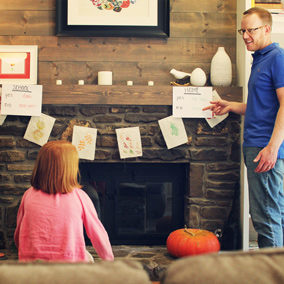Hi, I’m Zamira. Welcome to Astana. My friends and I would be honored if you would attend our dastarkhan (dahs-tarh-qan), a feast for special guests like you. Slip off your shoes at the door and join us. How do you like the colorful tablecloth I spread out on the floor? We don’t eat at a table. Here comes Mother with her best teapot and a platter of puffy, fried breads. I think they look like little pillows. The sweet ones taste similar to doughnuts.
Since this is your first time in Kazakhstan, I will help you learn our customs. Some are passed down from the days when our ancestors lived in yurts – tents they could set up and take down easily as they followed their cattle and horses to good pasture. Most Kazakhs don’t live in yurts anymore, but we still enjoy sitting on thick beautiful carpets, sharing tea, and eating feasts together.
My friend is bringing a pitcher of warm water, a basin, and a towel for washing up. We usually eat with our hands. In fact our national dish is called “five fingers.” You will get to try this dish of sheep meat, egg noodles, carrots, and potatoes a little later. But first, here’s your kesey (key-see-ay), or teacup. It’s only filled partway so you can drink all your tea before it gets cold. Just pass your empty cup to Mother and she’ll keep pouring more. Kazakh tea may taste a little different than what you’re used to – we add salt and butter instead of cream and sugar.
After dinner, Grandfather will entertain us with his dombra (dohm-brah), a two-stringed instrument similar to a mandolin. He loves telling stories of the olden days when wild horses roamed the grassy plains as well as recounting the historic events of 1991, the year our country gained independence from the Soviet Union. Grandfather often speaks of how the communists closed the mosques and churches and brought their atheistic beliefs to our country. “Now,” he proclaims, “Kazakhs are free to worship and follow Islamic traditions once more.”
Tomorrow, you can visit my class at school. I attend the morning shift, but some students begin class after lunch. I have had the same teacher since Grade 1 and she is like a second mother to me. My class is learning math, history, geography, writing, and reading. Even though my family speaks Kazakh at home, we use Russian at school and in town. When school ends I must do homework, but afterwards we can play Blind Man’s Bluff or Hide and Seek.

Family Activity:
Zamira speaks Kazakh at home and Russian at school. Find out what that would be like. Using the chart below, make one sign that says “home” and another that says “school.” On the “home” sign, copy the Kazakh words for “yes” and “no.” On the school sign, copy the corresponding Russian words.
Home School
yes (ee-yeh) yes (dah)
no (zhok) no (nee-yeht)
Practice pronouncing the words on each sign. Now choose one person to be the parent and one to be the teacher. Have them sit by the appropriate sign. The remaining people are children. The parent and teacher should take turns asking the children simple questions that can be answered “yes” or “no.” The children can use the signs to answer in the correct language for their setting.
Pray:
- Many Kazakhs consider the Christian faith to be a belief system for Russian families. They believe that to be Kazakh is to be Muslim. Pray that they will understand that following Jesus will not cause them to lose their cultural identity as Kazakhs.
- A few small gatherings of Kazakh believers exist in the cities. Pray for urban believers to share their faith with friends and family living in the villages.
Kazakhs
Beet Salad
Central Asia
Preparation Time: 60 minutes | Serves: 8
Ingredients
- 6 large beets
- 2 teaspoons sugar
- 1 teaspoon salt
- 2 teaspoons balsamic vinegar
- 1 cup sour cream
- Fresh dill garnish (optional)






